Author Archive: Robert Mason
Monthly Archive: December Robe
Weapon Wednesday: Frankish "Seax" swords
In the 3rd century of the current era the term "Frank" was used by Romans and others to describe a group of Germanic tribes living in the Rhine valley. In the 4th century Franks settled within territory ruled by the Romans and were a recognised kingdom. After the fall of the Western Roman Empire the Frankish kingdom under their Merovingian kings spread over all of France (which to this day is named after this confederation of Germans).
Weapon Wednesday: the "djanbīyya" dagger
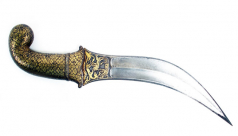
The Middle Eastern two-edged curved dagger is one of the most recognizable weapon forms. Typically it is known by the Arab term djanbīyya sometimes Anglicised as "jambiya", or also often the Arabic term khandjar, but these curved daggers are found across the Middle East.
Weapon Wednesday: a Romano-Egyptian sword hilt
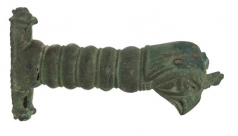
A look at a cast bronze sword hilt, acquired before 1910 in Cairo by Charles Currelly and presently in the Eaton Gallery of Rome.
Weapon Wednesday
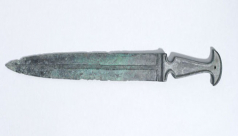
Weapons are one of the most politically-incorrect subjects there are, associated with brutality and violence. But they are also important, and have often defined the cultures that made them....
Re-enactment, Archaeology, and the Ancient Rome & Greece Weekend V of IV: The Final Story
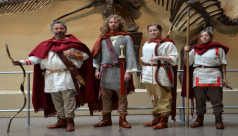
Ancient Rome & Greece Weekend is over, and I thought I would show you the results of my attempt to create a recreation, re-enactment, or impression of a soldier from Dura-Europos (so this is not really one of the original IV, so to speak, hence it is V of IV). In the group above you can see me on the left, with members of the University of Toronto's Hart House Archery Club, who collectively constitute the ROM's 3rd century Roman army (or ROMan army - it being the ROM, we are posing in front of a dinosaur).
Re-enactment, Archaeology, and the Ancient Rome & Greece Weekend IV of IV: The Tunic
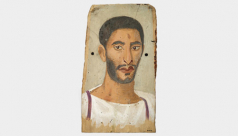
An important part of everyday life in the past, but one with very little impact on the archaeological record, is clothing...
Re-enactment, Archaeology, and the Ancient Rome & Greece Weekend III of IV: The Dagger
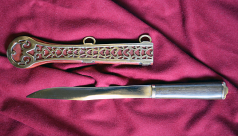
So in my project to recreate the equipment of a 3rd century Roman soldier from Dura-Europos, following the creation of the sword, I next moved on to the dagger. Little seems to be known about the daggers used by soldiers in the Roman World of the 3rd century AD.
Re-enactment, Archaeology, and the Ancient Rome & Greece Weekend II of IV: The Sword
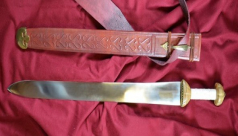
The sword is one of the definitive weapons of the Roman soldier...
Re-enactment, Archaeology, and the Ancient Rome & Greece Weekend: I of IV
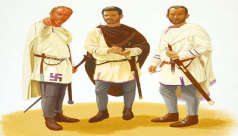
As an archaeologist the main goal in my work is to understand the people of the past...
Nature meets Culture at Archaeology Weekend!
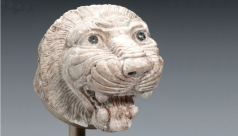
Humans would have been aware of the other creatures that shared their world from earliest times. At first they would have had an eye towards possible predators or competitors, then possible prey as they became hunters. As the cognitive ability of Early Humans developed, they would observe the nature of the animals which co-habited this Earth with them.
